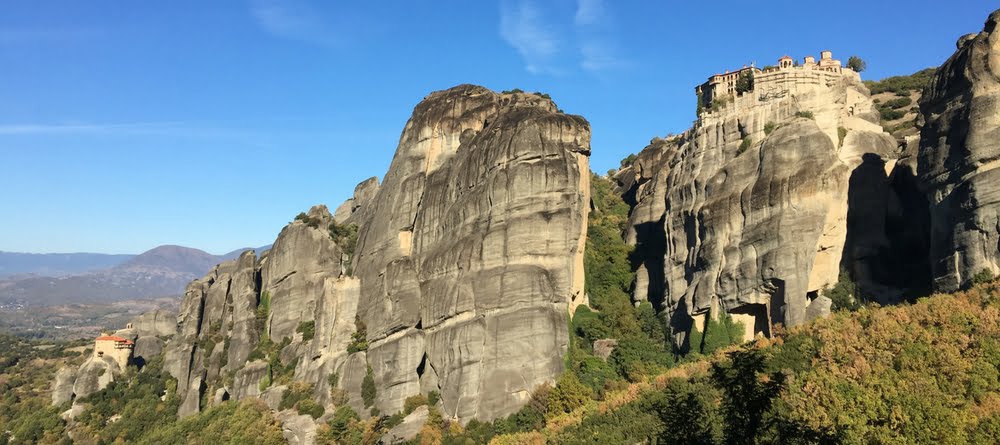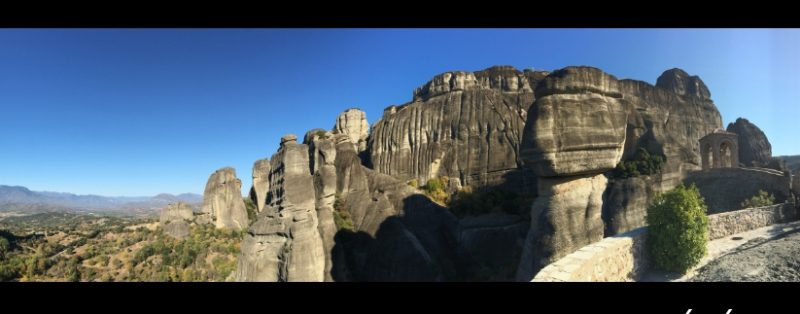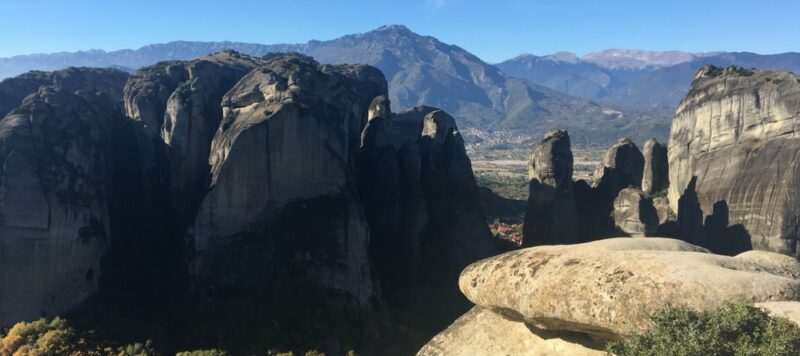No matter how many photos you’ve seen, or how many times you’ve heard your friends describe this extraordinary place, you’re still amazed when you see the meteor site for the first time with your own eyes. It’s simply breathtaking! It’s not for nothing that Meteora is one of the 20 sites in Greece listed as a Unesco World Heritage Site.
Here is a description of the monasteries to visitand we in a separate other article the practical information about visiting the site.
A little history of Meteora
Lemeteors, are not “rocks sent from the sky” as the etymology of the word suggests. They are, in fact, rocky sediments rocky sediments left behind by the river that flows into the Thessaly Sea during the Tertiary Era.
From 985, the first hermits occupied caves in these rocky peaks. It wasn’t until the 14th century that buildings began to appear. The first monastery, called Megalo Meteoro, was founded in 1382. Between the 14th and 16th centuries, a further 22 monasteries were built.. Access is difficult, using ropes, ladders and ingenious systems of nets attached to pulleys. Unfortunately, by the 18th century, most of the monasteries had fallen into ruin. Only six remained, and at the beginning of the last century, staircases were built to make access easier. Today, the monks and nuns who live in them have kept them in good condition, and even maintained them very well. Most of the old pulley systems have been preserved and automated, and are still used to hoist supplies.
On the site, you will also notice the numerous ruins of ancient monasteries, such as the monastery the of Saint Antoine, for example. They too are impressive, as they bear witness to a lifestyle that is, to say the least, Spartan.
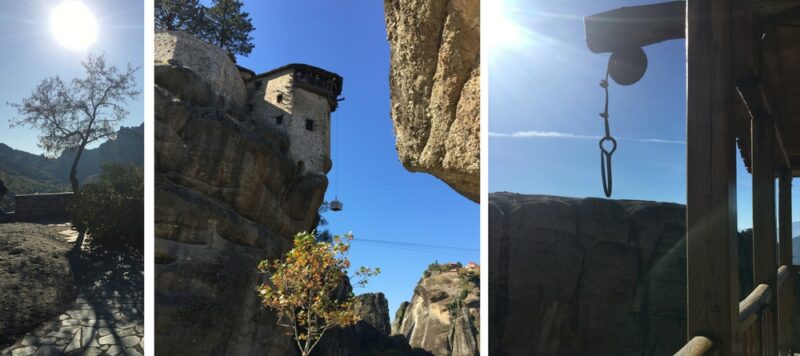
The Meteora monasteries: a practical tour
The Megalo Meteoro monastery
It’s the largest and best-known monastery, the first of a long series.. The first chapel built by Saint Anasthase was erected in 1382, and was incorporated as a sanctuary in the 16th century when the monastery expanded.
It’s also the most touristic monastery and therefore therefore the most frequented. Its size enabled the monks to devote more space to the visit. A small museum evokes the War of Independence and the role played by monasteries during this period. We also like the reconstruction of an early 20th-century kitchen, dining room and carpenter’s workshop.
The parking lot is only a short distance away. But this proximity is deceptive, as youhave to climb many steps before entering the monastery via a tunnel.
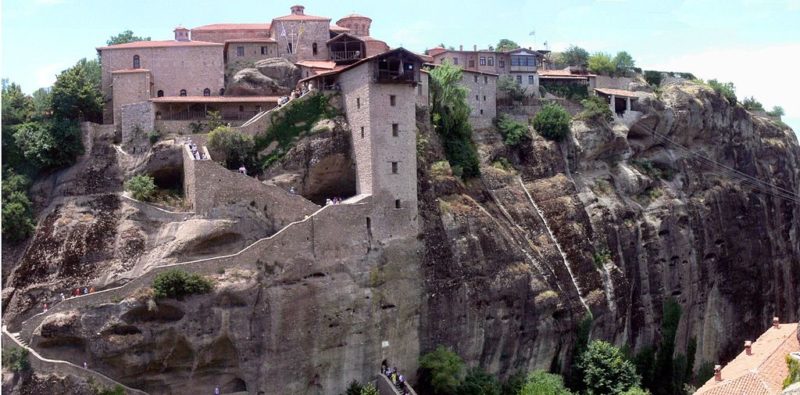
Varlaam monastery
For me, the most spectacular, situated high up on a fairly large promontory, it boasts a large, unobstructed terrace and a superb view of the neighboring monasteries. Built in 1518, it also boasts a church with beautiful frescoes by Frango Catellano, one of the masters of post-Byzantine art.
It is also very impressive when seen from Roussano.

The monastery of Agios Nikolaos
One of our favorites, it may be small but it’s one of the most authentic. The reconstruction of a cell, the salons… make it easier to imagine monastic life. Superb views if you climb to the very top of the terrace. There’s also a lovely chapel inside.
The approach hike is steep , but passes through a delightful undergrowth.
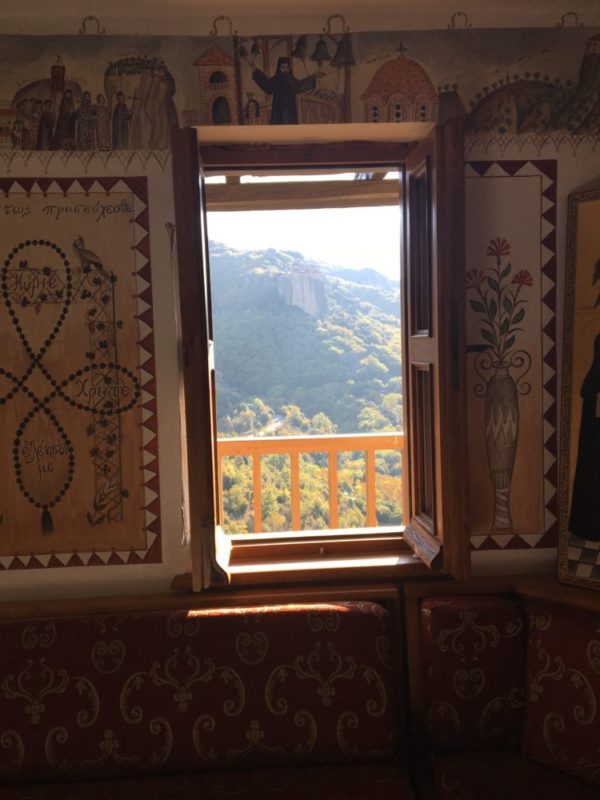
The Roussanou convent
This convent has a lot of charm, and is relatively accessible compared with the others (slightly fewer steps). The entrance is above a charming English-style garden. The nuns who run the convent open only a small part of it to the public. You can alsoYou can also admire the chapel , with its beautiful frescoes from the Cretan school.
Here you can also find little souvenirs with a difference: painted pebbles and delicious honey from the monastery. Enjoy also one of the finest views of Vaarlam and Saint Nikolaos. On your way out, be sure to follow the path upwards for a view of the entire site.
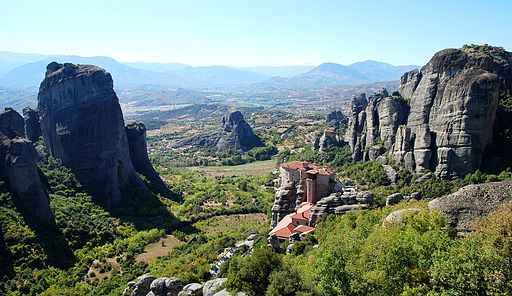
Aghia Triada monastery
At first glance, the monastery seems inaccessible. And yet, after descending to the foot of the north face, we climb back up the stairs along the cliff face via an impressive ascent (147 steps). In my opinion, it’s in this monastery that you get the “rock” feeling the most. In fact, the lovely gardens stretch right up to the end of the rocky peak. It’s enough to make you dizzy and remind you of James Bond’s stunts in the film “For your eyes only”.
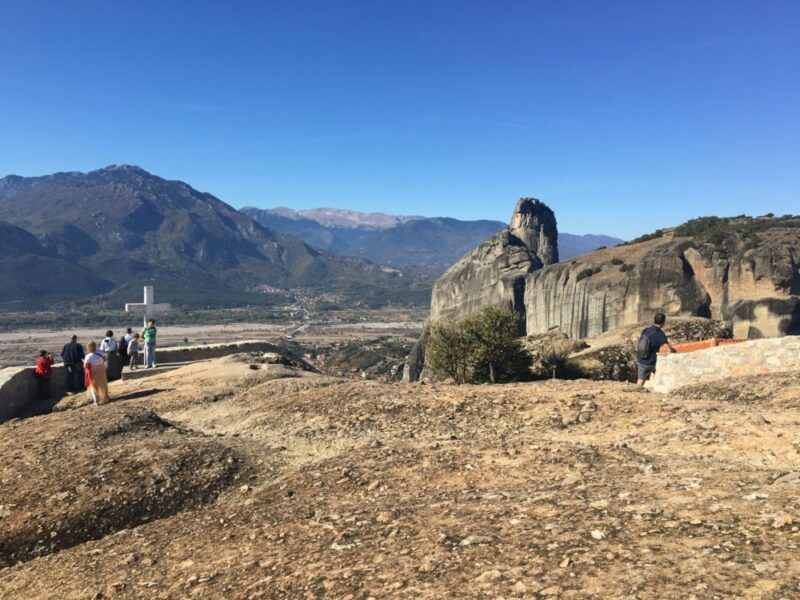
Agios Stefanos Monastery
Unfortunately, I didn’t visit this monastery. It’s all aboutis one of the most accessible, as you can reach it simply by crossing a bridge and don’t have to climb any steps .
The ladders and monastery of Saint Anthony
The monastery of Saint Anthony is not open to the public, but has been renovated. It’s a little off the beaten tourist track, and we highly recommend the walk from the church of Karistas. From the path you can discover the caves, equipped with wooden ladders, and the semi-troglodyte monastery. Impressive to be at the foot of these cliffs in this vegetation. An immersion that makes us realize even better the prowess of his constructions.
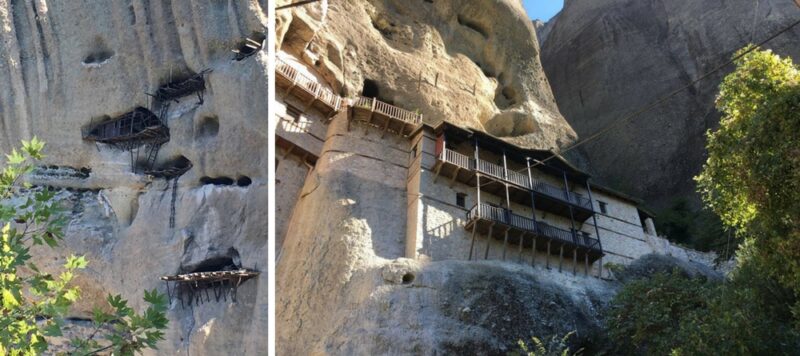
Practical tips for visiting Meteora
Find all the practical information you need in our full article on visiting Meteora.
- How long does it take to visit the meteors?
- What are the opening hours of the monasteries?
- What should I wear to visit the monasteries?
- Where to stay and eat in Meteora?
- Find a guide to visit Meteora
- And even more information on the Meteora Tourist Office website
Sophie B.
Map of Meteora
